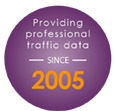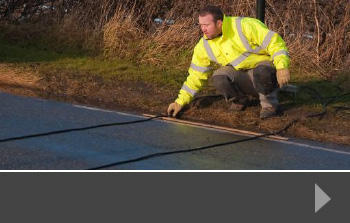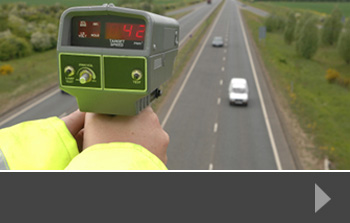Creating a resilient major road network for the North
In a report released earlier this year, Transport for the North – a partnership including elected and business leaders from Northern England alongside government and national transport bodies – looked at how the Northern road network could be improved in order to support economic growth.
In a report titled Initial Major Roads Report – Strategic Transport Plan Evidence Base, the authors state that the Strategic Road Network – motorways, for example – makes up just 2% of the road systems in this part of the UK, and so in order to boost economic progress, it’s the roads that lead from the motorways to the key developmental areas of the North that require the most attention.
Key strategic areas
The report says that the evidence it has gathered shows the four major economic areas that are affected by the major road network:
- Ports and airports
- NPIER (Northern Powerhouse Independent Economic Review)industry clusters
- Important economic centres – including cities, towns, universities and enterprise zones
- Areas of tourism
The major road networks to all of these key areas across Northern England need to be strong and reliable enough to enable economic growth and success.
The importance of journey time
One of the critical factors in supporting this success is reliable journey times. It is important that the road network is reliable, resilient and efficient, says the report, in order that people and goods can travel with an expectation of reasonable journey time and without hold-ups because the network is inadequate.
The report says that improving the road network and, by extension, journey reliability brings the following productivity benefits:
- Attracting and retaining highly skilled workers to live and work in the North.
- Opening up opportunities in the labour market by allowing longer distance commuting trips.
- Providing sufficient capacity to meet long term demand, and to improve resilience and reliability across the network.
- Supporting current investment, and attracting foreign direct investment.
- Helping businesses to collaborate closely, and improve their access to their supply chain.
- Reducing operating costs.
- Enhancing the user experience.
- Enhancing trading opportunities.
- Enhancing the quality of life for all people living in the North.
You can read the full report here – and see how the road network needs to be improved in order to support plans for a growing, sustainable and successful Northern economy.
Journey time surveys from RDS
Improved journey times have a positive effect on a wide range of people – from commuters to freight companies and the businesses in the area. Anyone who uses the roads wants a simple, quick and reliable journey, whether travelling on public transport or using their own vehicle. Journey surveys help planners, developers and strategists to see where roads are currently inadequate, and provide a bench mark so that progress can be measured as roads are improved.
To find out how Road Data Services can help to plan and execute detailed journey surveys for your development or long-term roads strategy, contact us today.
In the recent Autumn Statement, Chancellor Philip Hammond announced further investment into the transport infrastructure across England. This investment is designed to reduce congestion, improve journey times and boost economic benefits to cities around the country. A variety of traffic surveys, journey time investigations and other data collection is likely to be required in order to identify exactly where the investment is needed, and what sort of plans are required.
Key pinch points targeted
Overall, the government is planning to invest an additional £1.1bn into roads and local transport, upgrading in key places and focusing on those areas where severe congestion occurs. In the detail of the Autumn Statement, this expenditure is allocated as follows:
- £220m to ease congestion ‘at critical points on the strategic road network’. No specific plans have yet been announced.
- £390m investment in future technologies, including electric vehicle charging points, support for low emission public transport vehicles, money for the development of alternative fuel options for aviation and HGVs, and additional investment in the research and testing of driverless car technology.
- £100m towards flood prevention and resilience, particularly focused on those road systems which have suffered from flood damage in recent years.
- £27m of development funding for the Oxford-Cambridge expressway, via Milton Keynes, opening a growth corridor from east to west.
Road and traffic survey results
In addition, the government is looking at five key road systems, following studies carried out by the Department for Transport. As part of the 2020-2025 Roads Investment Strategy, road improvements will be carried out on the A66 and the M60 North West quadrant, with further investigation underway into the case for improvements to the A1 in the East of England, and better connections between Sheffield and Manchester.
Traffic survey support from RDS
At Road Data Services, we work with local authorities, government departments, developers and contractors to assess current road usage and provide key data to help parties make the best possible decisions. From motorway journey time surveys through to parking data and automated traffic counts, we can help deliver key data to a wide range of private and public projects. To find out more, contact us today.
In November 2014, Prime Minister David Cameron announced that the government will be spending £15bn on UK road improvements to improve distance and travel times from some of the country’s traffic hotspots.
Speaking to the Confederation of British Industry (CBI) at the end of last year, Mr Cameron identified several projects where driving distances and time were causing problems, including routes across the Pennines, the A1 north of Newcastle and the A27, which runs along the south coast.
Collecting Journey Data
Quality of data is a key factor in deciding where the new money is best spent. Whilst the areas identified all have anecdotal evidence of time and distance problems, accurate, reliable information will be needed to plan and implement any improvements – and that means collecting tightly defined information. Journey times are extremely important for commuters, general travellers and particularly for haulage firms, all of whom will welcome the additional funding for road improvements.
Going the distance for travel time
In his speech, Mr Cameron said:
“In the ‘50s it took us eight years to design and build the first 50 miles of the M1. Today it can take that long just to widen one section of a motorway. So we are speeding things up.
Since we came to office we haven’t just announced a load of road and railways schemes, yes – we have actually got diggers on the ground on the A23, the M62, the M4, M5 and M6. What’s more it’s our ambition to cut the time it takes to upgrade our roads in half. So we are determined to dismantle some of the procedures that have been slowing us down and slowing you down.”
Driving time and distance surveys from RDS
At RDS, we can devise, implement and report on journey times, giving you the opportunity to convert information which you can use for planning, development or proposals to improve your road system.
We can plan a journey survey in conjunction with speed surveys and traffic count surveys to give you a clear picture of what’s happening on the roads that concern you most. To find out more, contact us today.
An £88 million project to manage traffic flow and improve driver safety on a seven-mile stretch of road where the M4 meets the M5 at the Almondsbury Interchange just outside Bristol. The project uses a variety of smart technologies to manage traffic, helping road users to keep moving safely, reducing the potential for accidents and making the most of the motorway network.
HA Traffic Survey
The scheme was launched in January 2014, and now the Highways Agency is conducting a traffic survey which asks for driver experiences, so that the Agency can assess the effectiveness of the system in its early days.
The scheme uses a number of technologies and traffic management options which may be familiar to those driving on other busy sections of the UK motorway network. These include variable speed limits, the use of the hard shoulder as an additional lane during heavy traffic and responsive overhead signs that can give quick and accurate information to drivers about lane closures, accidents or incidents ahead and access for emergency vehicles.
Feedback on Smart Road Management
“More than 140,000 vehicles use this stretch of the M4 and M5 every day,” said Paul Unwin of the Highways Agency. “After a two year period of residents and commuters patiently enduring road works and heavy construction, we are now keen to hear just how our road users are adjusting to the new system. I therefore urge drivers to take our online survey, so we can better understand the needs of road users for future projects.”
The Highways Agency also said that although work was complete and the project launched, there will still be some overnight closures and diversions as additional work takes place. Diversions will be in place for those road users affected.
Do you use this stretch of motorway? If you’d like to give your feedback, you can visit the Highways Agency Traffic Survey page.
Traffic Survey Data from RDS
For detailed, tailored traffic surveys, including automated traffic counts, speed surveys, queue surveys and journey time surveys, talk to RDS. We specialise in designing, implementing and reporting on a wide range of traffic and pedestrian-related issues. Our data helps you to make decisions about highways management, traffic flow around new developments, improved pedestrian and cyclist safety and much more. To find out how we can help, just contact us today.
The latest release of SatNav system TomTom is to feature a number of new ways to help drivers anticipate traffic congestion and keep things moving.
TomTom’s new update is available to all existing users, and to buyers who choose the most up-to-date version of the system. The new features are designed to give drivers even more information which is as accurate as possible, allowing them to plan their journeys and be aware of road works, effects of traffic congestion and general road conditions as soon as possible.
Planning your journey time
More sophisticated collection and analysis of the data available to commercial SatNav systems means that when you input your destination and ask for directions, TomTom will look at current journey times through busy areas, predicting speed and regular traffic flow so that it can give you a realistic journey time and an alternative route should you require one. It will also detect current road works more accurately, and be able to warn you of traffic conditions ahead, particularly if it registers that you are travelling at a speed where it may be dangerous for you to stop quickly.
Greater journey awareness
With the amount of traffic on the UK’s roads continuing to grow, being able to predict how long your journey will take is becoming increasingly important. Traffic flow can be difficult to calculate, particularly in areas that are liable to severe or regular congestion, and many people now rely on SatNav systems or tablet and smartphone devices to give them warning of current traffic conditions so that they can plan accordingly.
Journey time surveys help on the ground
It’s not just knowing where the congestion is that matters, however. Traffic planners and developers need to have accurate data in order to improve existing routes and build new ones. The best way to do this is still an on-the-ground journey time survey. It provides accurate, real-time data and takes into consideration the views and experiences of those using the roads. Armed with this information, planners can investigate ways of improving access, traffic control and pedestrian safety so that all travellers can plan their journey with confidence.
At RDS, we can design and undertake a range of journey time surveys, providing you with precise data that helps you to build a strong case. Contact us today to find out more.











